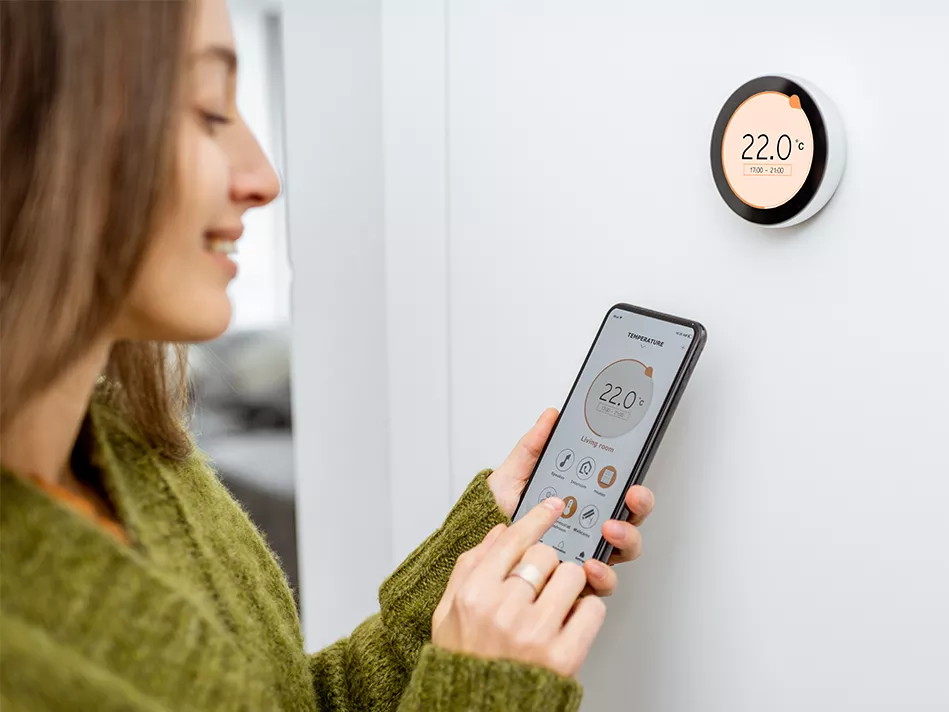Owning a home comes with a few costs, one of which is your home’s energy bill. In 2019, residential homeowners paid an average of $115 a month – or over $1,300 a year – in electricity bills, according to the US Energy Information Administration.
Since it’s National Cut Your Energy Costs Day, America’s Preferred Home Warranty wants to share some ways you can lower your energy use, and ultimately your energy costs, without a lot of effort or expense.
Get an Energy Audit
If you have a high energy bill and can’t figure out where all the energy is going, a home energy audit or assessment provides good insight into your home’s energy use. And while you can perform an energy audit yourself, many energy companies offer them as a free service to help homeowners discover:
- How much energy their home uses
- Where energy is being wasted
- How to fix these issues to save energy
You can learn a lot about your home’s energy use with a comprehensive audit. Plus, by following the recommendations the audit uncovers, you can make your home more energy efficient—and easier on your budget.
Use Energy Star Appliances
Compared to the average appliance, Energy Star appliances are certified to help reduce your energy consumption by as much as 50 percent! So, while an Energy Star appliance may cost a bit more at the register in some cases, it makes up the difference (and then some) by saving you tons in energy costs throughout the appliance’s lifecycle.
Here are some cool facts about Energy Star appliances that show just how effective they are:
- A typical Energy Star fridge costs about $50 a year to run and uses less energy than a 60-watt bulb.
- A new Energy Star dishwasher costs less than $35 a year to run and saves roughly 1,900 gallons of water before it’s replaced.
- An Energy Star clothes washer can cut your energy costs by one-third and your water costs in half.
When it’s time to replace an appliance at your home, choosing one with the Energy Star seal is a smart move for any homeowner.
Install Smart Devices
Smart devices are one of the easiest ways to cut back on energy use, and when powered by today’s automated smart home hubs, they enable you to both track and run numerous devices, appliances, and systems around your home from your phone, tablet, or the hub’s built-in voice assistant.
From smart bulbs and thermostats to smart plugs and power strips, there are numerous ways to control, monitor, and optimize your energy use while maintaining optimal comfort—and the list of things these gadgets can do is getting bigger every year! If you’re interested in learning more, our recent article on “Smart Home Devices That Can Help Save You Money” is worth a read.
Check Seals and Insulation
We can’t afford to heat the whole neighborhood! Sound familiar? You probably heard it as a kid, yet many homeowners don’t realize they’re doing essentially the same thing—just not in the same way.
If your home has issues with its seals and insulation, you could literally be heating and cooling more than you need to. Window seals are particularly notorious for letting air through, which can drive up your energy bills when heating and cooling your home. But these aren’t the only culprits: Defective fridge and freezer seals can also make the appliance more costly to run.
As far as insulation goes, the US Department of Energy considers your home’s air ducts and attics as prime energy vacuums if they aren’t properly sealed or insulated. You can help your air distribution system be more efficient by keeping furniture and dust away from any inlets or outlets. If that doesn’t help and your energy costs keep soaring, it might be time to call in a professional to see what improvements can be made.
Turn Off and Unplug
Homeowners are becoming more tech-driven than ever, but many of these devices end up becoming energy vampires that drain electricity and your home budget. In fact, the Natural Resources Defense Council discovered that around 25% of your total energy use is from electronics in standby, sleep, or idle modes.
If you want to cut back your energy use and power bill significantly, smart plugs are a great way to turn energy off at the source while hardly lifting a finger. Or you can always do it the old-fashioned way, by simply unplugging and turning off unused devices until you’re ready to power them up again.
Ready for more tips that can help your home budget? Visit our blog for more articles and insights on a range of topics, including home maintenance, DIY projects, and more. Want to stretch your budget even further? Discover how an APHW home warranty can help save you from unexpected repair costs.
Visit us on Facebook, LinkedIn, Twitter or Instagram to tell us your thoughts!

